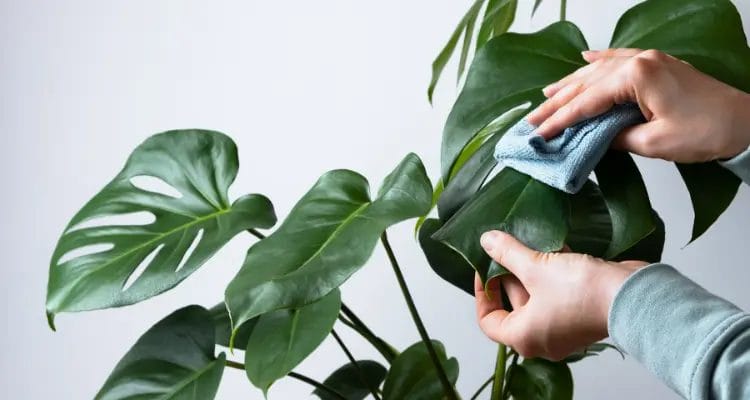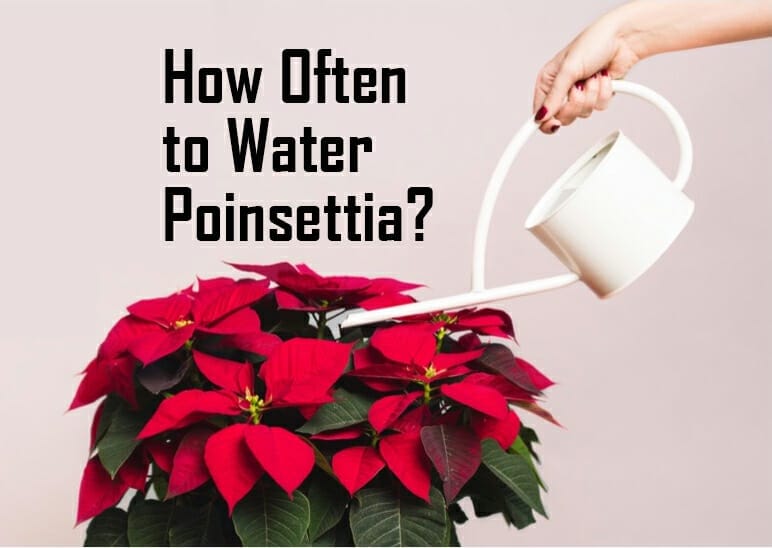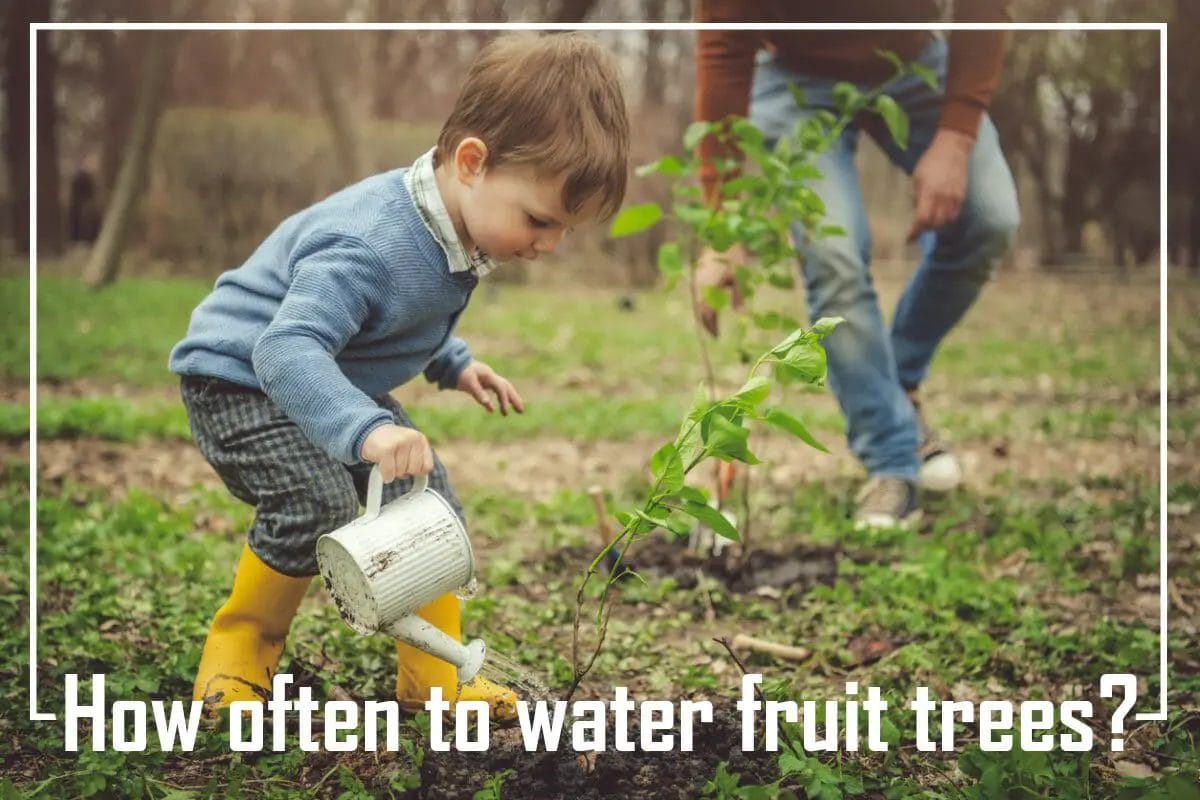If you have a Monstera plant, you may wonder how much water it needs. How often should you water it? How much is too much? In this comprehensive guide, we will answer all of your questions about Monstera care. We will discuss everything from watering to fertilizing to pests and diseases. By the end of this article, you will know exactly how to take care of your Monstera and keep it healthy.

What do you need to know about Monstera?
Before starting this guide, it is essential to understand that the care you give your Monstera will directly impact how vivid its leaves are. If you neglect your plant, it will become dull, and its leaves will start to yellow. On the other hand, if you give it too much water or fertilizer, its leaves will become burnt. Therefore, finding a balance to keep your Monstera healthy is important.
To correctly care for a plant, you need to know the origin of the plant. For example, Monsteras are native to the tropical forests of Central and South America. In their natural habitat, they grow on trees and get their nutrients from the air, rainwater, and decomposing leaves. This means that they do not need a lot of fertilizer. But, on the other hand, too much fertilizer will harm them.
Now that we know a little bit about the natural habitat of Monsteras let’s talk about how to water them.

How Much Water Does a Monstera Need?
Well, it depends on a few factors – the size of your Monstera, the type of soil it’s in, and the temperature/humidity of your growing environment. But generally, you should water your Monstera every 1-2 weeks.
If you let the soil dry out completely between watering, that’s usually fine. But if you consistently let the soil get too dry, your plant will start to suffer. The leaves will begin to brown and drop off, and new growth will be stunted. But, conversely, if you water too often, your plant will also suffer. The roots will rot, and the leaves will yellow and drop off. So it’s important to strike a balance.
One way to tell if your Monstera needs water is to check the soil. If it feels dry to the touch, it’s time to water. Another way to tell is by looking at the leaves. If they are drooping, that’s a sign that the plant is thirsty.
When you do water your Monstera, make sure you water it deeply. Water until it starts to drip out of the bottom of the pot. This will help ensure that the roots are getting enough water. Then, allow the excess water to drain before putting your plant back in its spot.
Do not water the leaves or stems of a Monstera deliciosa because they cannot take any more moisture than they already have been given.
When it comes time for your Swiss cheese plant’s next bath session, ensure that you only focus on its roots instead of soaking its leaves with excess moisture. Well this might cause some damage over time due to how delicate these guys can be when exposed directly under sunlight for long periods.

Do monsteras need a lot of water?
No, monsteras do not need a lot of water. They like their soil to be moist but not soggy. Let the top couple of inches of soil dry out before watering again. Monsteras are native to Central and South America, where they grow in the understory of the rainforest.
They prefer filtered light and humid conditions. If you live in a dry climate, you may need to mist your plant daily or put it on a pebble tray to keep the humidity up.

Watering Mature Monstera Plants vs. Young Plants
One of the most common questions is how to water Monstera plants.
While this can be tricky to answer, it’s not as hard as you think. The overall goal of watering plants is to keep the soil moist enough for roots to grow and stay alive. But that’s not all. You also have to consider how big or small your plant is when deciding how much water it needs.
For example, if you have had a large monstera plant in your home for years and grown big, giving them too much water will cause its leaves and stems to rot. Another thing we learned by making mistakes was that if you give young plants too little water, they’ll get dehydrated fast.

What are the signs of underwatering a Monstera?
Although Monsteras can tolerate some underwatering, monitoring the plant closely and water, when the top inch of soil feels dry to the touch is important.
Signs of underwatering include:
● Wilted leaves.
● Drooping leaves.
● Brown leaf tips or edges.
● A slowdown in growth rate.
If you notice any of these signs, water your Monstera immediately. Make sure to pour enough water, so it drains from the bottom of the pot, and be sure to wet all of the soil thoroughly.
What should I do if I think my Monstera is getting too much or too little water?
If you think your Monstera is getting too much or too little water, give it a chance to dry out a little before watering again.
Monsteras like good humidity and indirect light but can also stand direct sun for a short period. The soil should be kept moist but not wet. Watering frequency depends on the pot size, temperature, humidity, and sunlight exposure.
Allow the top 2-3 inches of soil to dry before watering again. You can usually tell if it’s time to water by feeling the soil. If it’s dry, it’s time to water
FULL RECAP: You can follow these guidelines when watering your monstera plant:
● Make sure the pot you’re using has well-draining soil.
● Check if the top inch of the soil is dry before you water.
● Ensure that your pot has a drainage hole in the bottom, allowing excess moisture to drain out. This will ensure that water doesn’t stay in the saucer and create an ideal environment for mosquito eggs to hatch.
● Keep your monstera plant in a spot with medium light; too much or too little light can stress them out and lead to browning leaves.

Monstera care at home
The light should be indirect or medium light. The leaves will become long and leggy if the light is too low. If the light is too high, the leaves will burn.
The second is humidity. Monsteras like good humidity, but they will also tolerate lower humidity. If the leaves start to brown and crispy, that is a sign of low humidity.
The third thing is that it’s also like moist earth but not wet. Let the top one-and-a-half inches of soil dry out before watering again if the foliage starts to yellow and drop off. Make sure the pot has drainage holes so water can drain out.
You can use cocopeat + compost and some regular garden soil to make your potting mix.
In monstera leaves, you can see a lot of surface area for the dust to settle. To clean them, you can use a damp cloth to wipe down the leaves.
You can also mist your Monstera leaves with distilled water or rainwater to help increase the humidity around your plant.
Frequently Asked Questions:
Should I mist my Monstera?
Can I put my Monstera outside?
What is the best pot size for my Monstera?
When is the best time to repot my Monstera?
How do I know if my Monstera is healthy?
How often do water monstera in summer?
How often should I water my monstera adansonii?
Conclusion:
Planting a healthy houseplant is not just an exciting thing, but it also helps you to reduce city pollution. All these benefits of home decorating with houseplants don’t end here. When used as a part of your zen space or terrarium, plants can decrease stress levels and release negative feelings in the mind when placed in the right environment. In addition, their vivid color and attractive foliage can easily complement any interior design scheme you have in mind.






